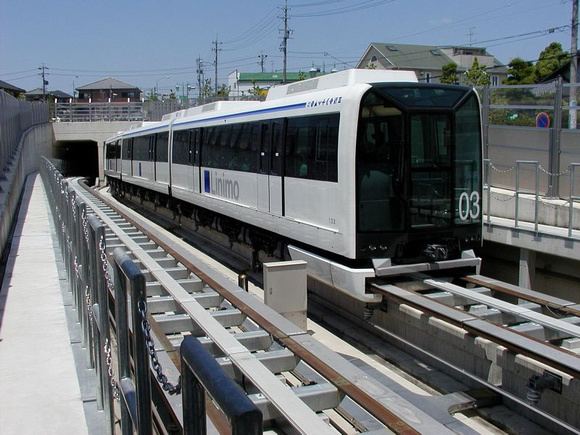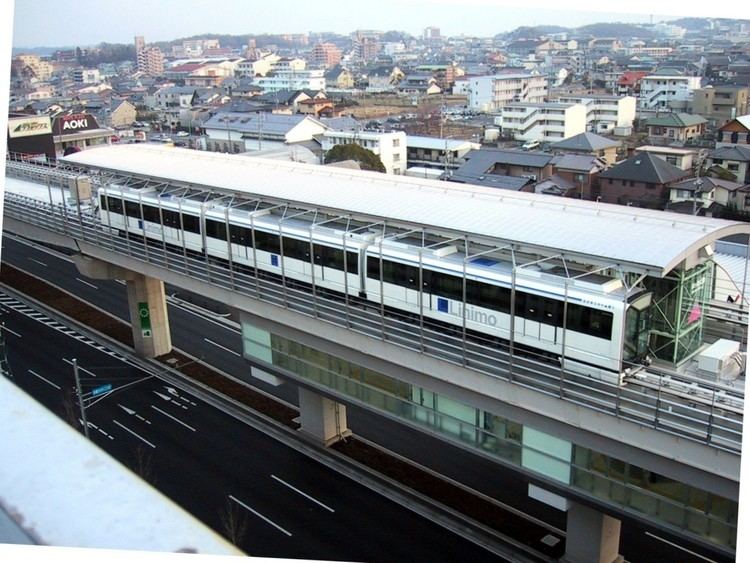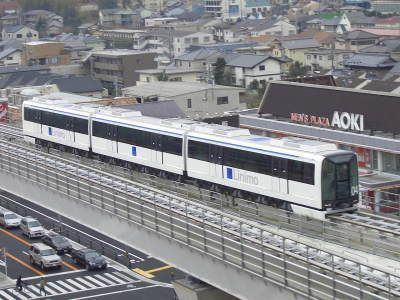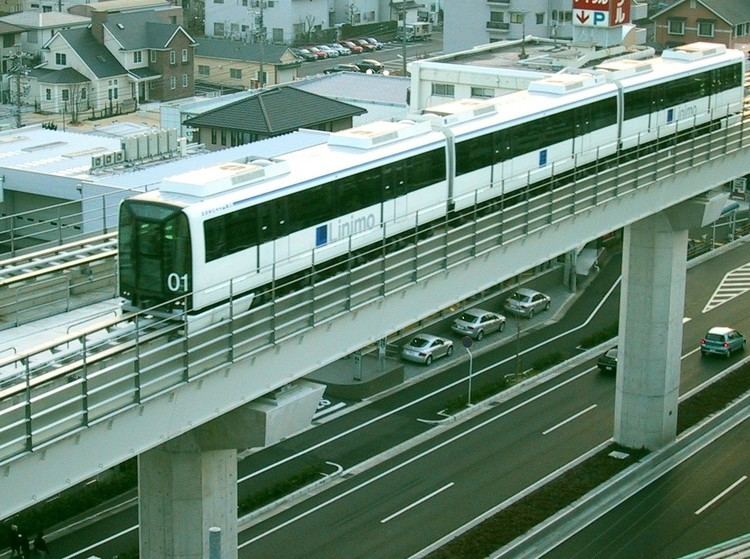Stations 9 | Termini FujigaokaYakusa | |
 | ||
Other name(s) Aichi High-Speed Transit Tobu Kyuryo Line Native name Rinimo (リニモ), formally Aichi Kōsoku Kōtsū Tōbu Kyūryō-sen (愛知高速交通東部丘陵線) Locale | ||
Japan s magnetic levitation train linimo
Linimo (リニモ, Rinimo), formally the Aichi High-Speed Transit Tobu Kyuryo Line (愛知高速交通東部丘陵線, Aichi Kōsoku Kōtsū Tōbu Kyūryō-sen) is a magnetic levitation train line in Aichi Prefecture, Japan, near the city of Nagoya. While primarily built to serve the Expo 2005 fair site, the line now operates to serve the local community.
Contents
- Japan s magnetic levitation train linimo
- Linimo maglev switch
- Specifications
- Rolling stock
- Technical and financial difficulties
- Construction history
- Stations
- Cancelled plan in Taiwan
- References

Linimo is owned and operated by Aichi Rapid Transit Co., Ltd. (愛知高速交通株式会社, Aichi Kōsoku Kōtsū Kabushiki Gaisha) and is the first commercial maglev in Japan to use the High Speed Surface Transport (HSST) type technology. It is also the world's first unmanned commercial urban maglev. There are some sources that ambiguously describe "unmanned" as "automated" or ignore the condition while making such a claim but Linimo was actually the fourth commercial urban maglev operated in the world, predated by the Birmingham Maglev (1984-1995), the Berlin M-Bahn (1989-1991) and the Shanghai Maglev (opened in 2004).

Linimo maglev switch
Specifications

The linear motor magnetic-levitated train has a top speed of 100 kilometres per hour (62 mph), floating 8 millimetres (0.31 in) above the track when in motion, and is intended as an alternative to conventional metro systems, not high-speed operation. The line has nine stations and is 8.9 kilometres (5.5 mi) long, with a minimum operating radius of 75 metres (246 ft) and a maximum gradient of 6%. The line uses Automatic train control (ATC) and Automatic train operation (ATO). Construction of the track cost ¥60 billion (US$575 million) while the Linimo trains themselves, built by Nippon Sharyo, cost ¥40.5 billion (US$380 million). The overall construction cost thus came to roughly $100 million per km.
Rolling stock

The trains for the line were designed by the Chubu HSST Development Corporation, which also operates a test track in Nagoya. They were built by Nippon Sharyo, cost ¥40.5 billion (US$380 million). The trains are fixed 3-car train sets (Mc1+M+Mc2). The end cars (Mc Car) are 14.0 metres (45 ft 11 in) long and the middle car (M Car) 13.5 metres (44 ft 3 in), giving a total train set length of 43.3 metres (142 ft 1 in). The cars are 2.6 metres (8 ft 6 in) wide. The Mc car has a capacity of 34 seated and 46 standing, and the M car 36 seated and 48 standing, for a total capacity per train set of 244. The cars have a semi-monocoque construction of welded aluminum, with two emergency doors at each car end and two 1,200-millimetre (47 in) doors per side.
Technical and financial difficulties

Being the first commercial implementation of a new type of transport system, the line suffered a number of highly publicized technical breakdowns during the Expo, with far higher demand during peak hours than the line's carrying capacity of 4,000 passengers per direction per hour. On March 19, 2005 and again on March 24, the number of people inside the trains exceeded the design capacity of 244 passengers and the train was unable to levitate. The line also has to be shut down for safety reasons when wind speed exceeds 25 m/s (82 ft/s), a relatively common occurrence in the area.

During the Expo, the line carried an average of 31,000 passengers per day, but ridership dropped to only 12,000 in the first six months after the Expo, and the line lost over ¥3 billion in 2006. While ridership gradually increased to 16,500 passengers per day in 2008, the line still made a financial loss of ¥2.1 billion in fiscal year 2009.
Construction history
Stations
Cancelled plan in Taiwan
In 2006, there was a plan to use the system for the Xinyi LRT, a proposed line in Xinyi, Taipei, Taiwan. The line was later cancelled in 2007.
